Jasmin Werner
unkrautfrei
14 September - 7 December, 2019
 unkrautfrei installation view
unkrautfrei installation view
 Piped icing: The interior of an inn, 2019, latex, Adriaen Brouwer catalogue images, Manufactum catalogue images, piped glue and pigment, 36 x 26 cm
Piped icing: The interior of an inn, 2019, latex, Adriaen Brouwer catalogue images, Manufactum catalogue images, piped glue and pigment, 36 x 26 cm
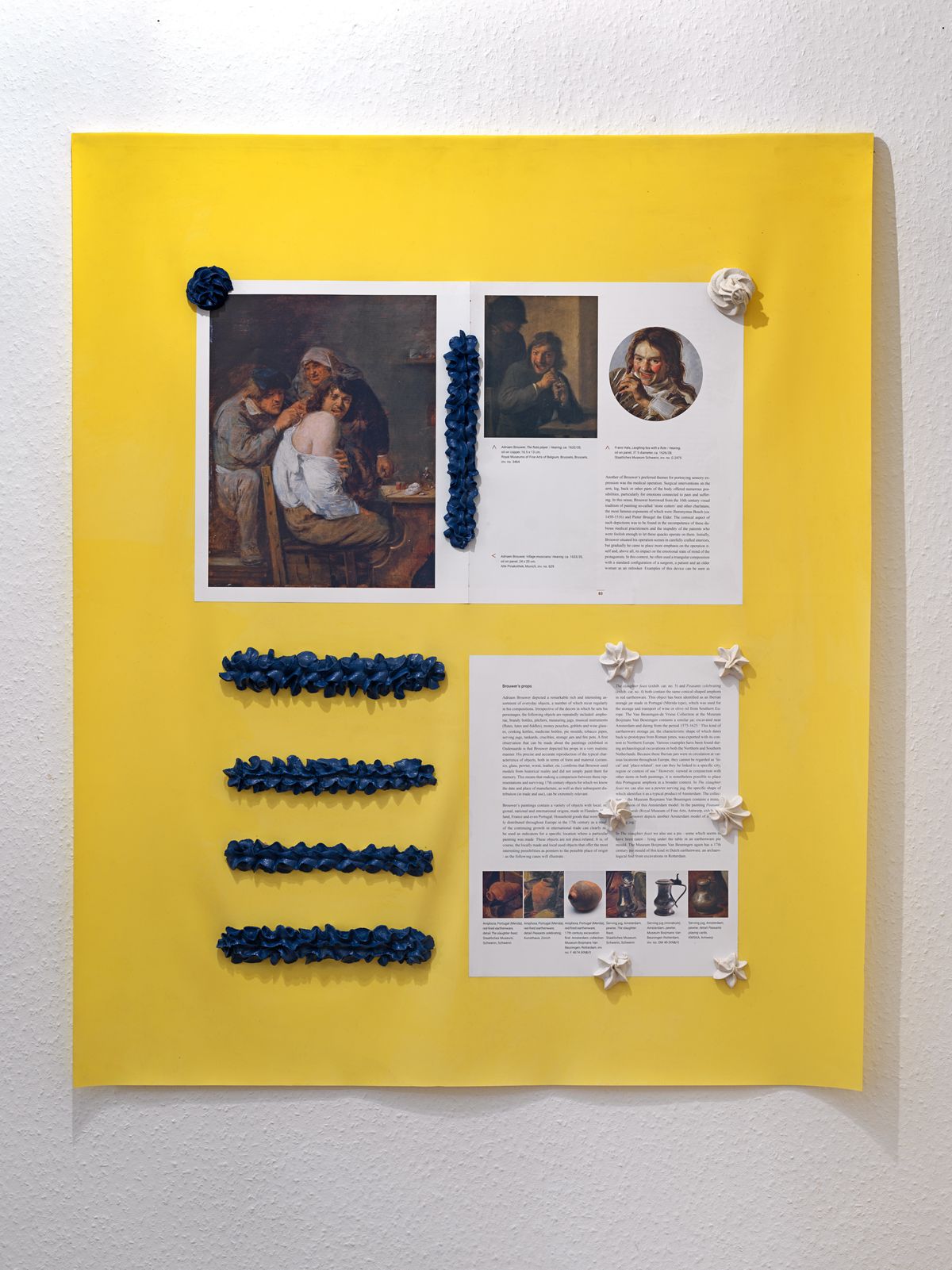 Piped icing: The back operation, 2019, latex, Adriaen Brouwer catalogue images, Manufactum catalogue images, piped glue and pigments, 82.5 x 69.5 cm
Piped icing: The back operation, 2019, latex, Adriaen Brouwer catalogue images, Manufactum catalogue images, piped glue and pigments, 82.5 x 69.5 cm
 Totalherbizid I, 2019, harrow, piped glue and pigments, 105 x 100 x 18 cm
Totalherbizid I, 2019, harrow, piped glue and pigments, 105 x 100 x 18 cm
 Totalherbizid I, 2019, harrow, piped glue and pigments, 105 x 100 x 18 cm (detail)
Totalherbizid I, 2019, harrow, piped glue and pigments, 105 x 100 x 18 cm (detail)
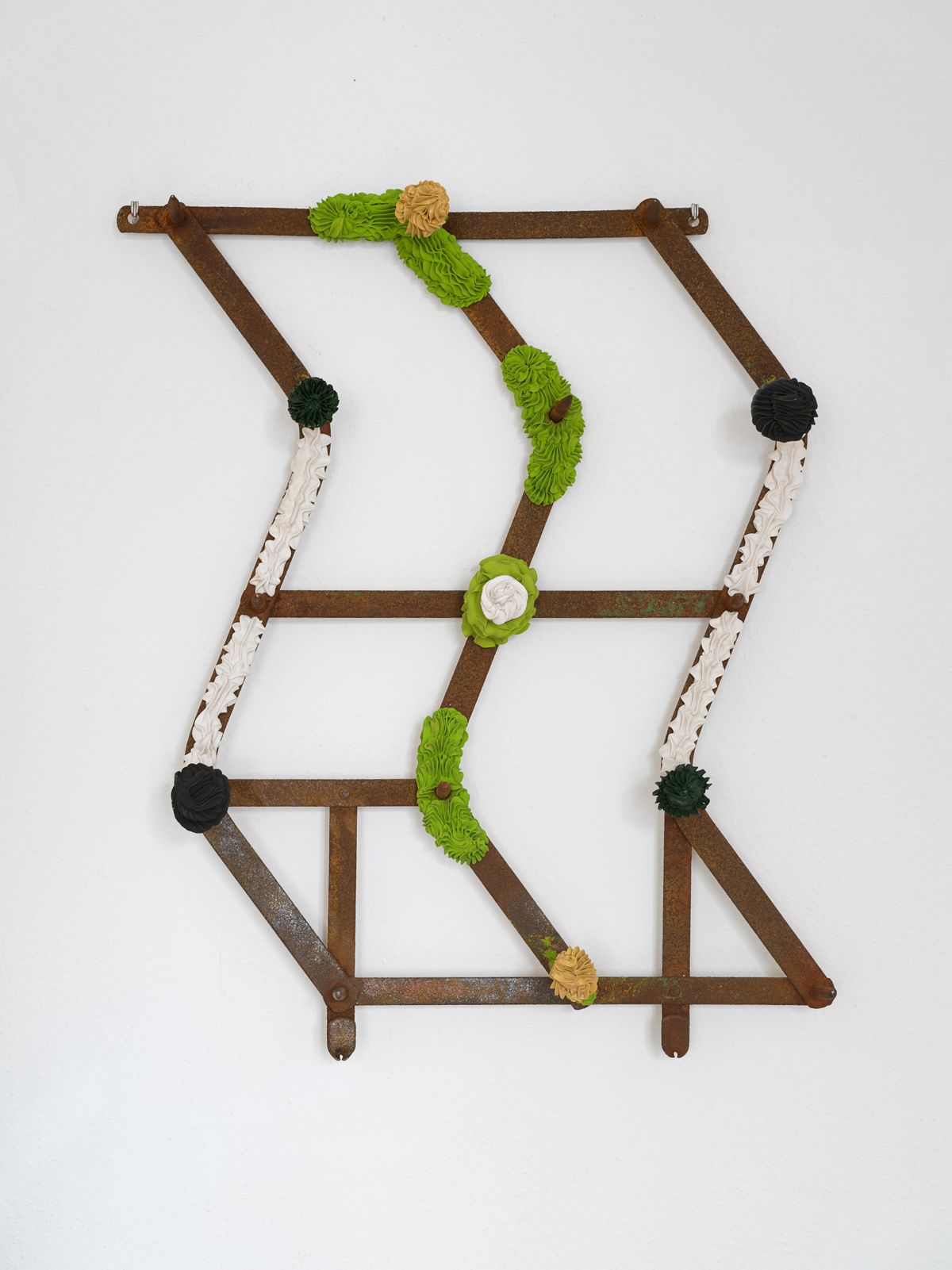 Totalherbizid II, 2019, harrow, piped glue and pigments, 82 x 67 x 18 cm
Totalherbizid II, 2019, harrow, piped glue and pigments, 82 x 67 x 18 cm
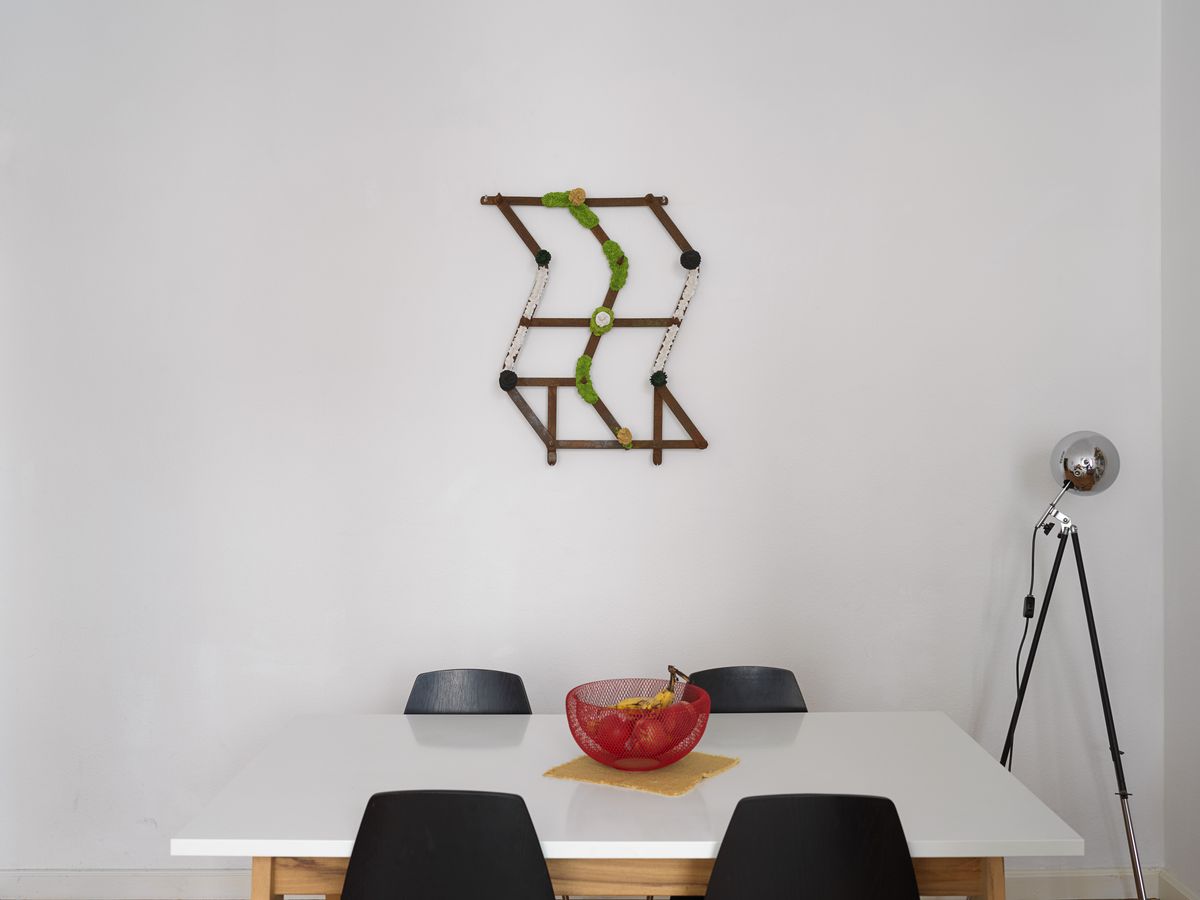 Totalherbizid II, 2019, harrow, piped glue and pigments, 82 x 67 x 18 cm
Totalherbizid II, 2019, harrow, piped glue and pigments, 82 x 67 x 18 cm
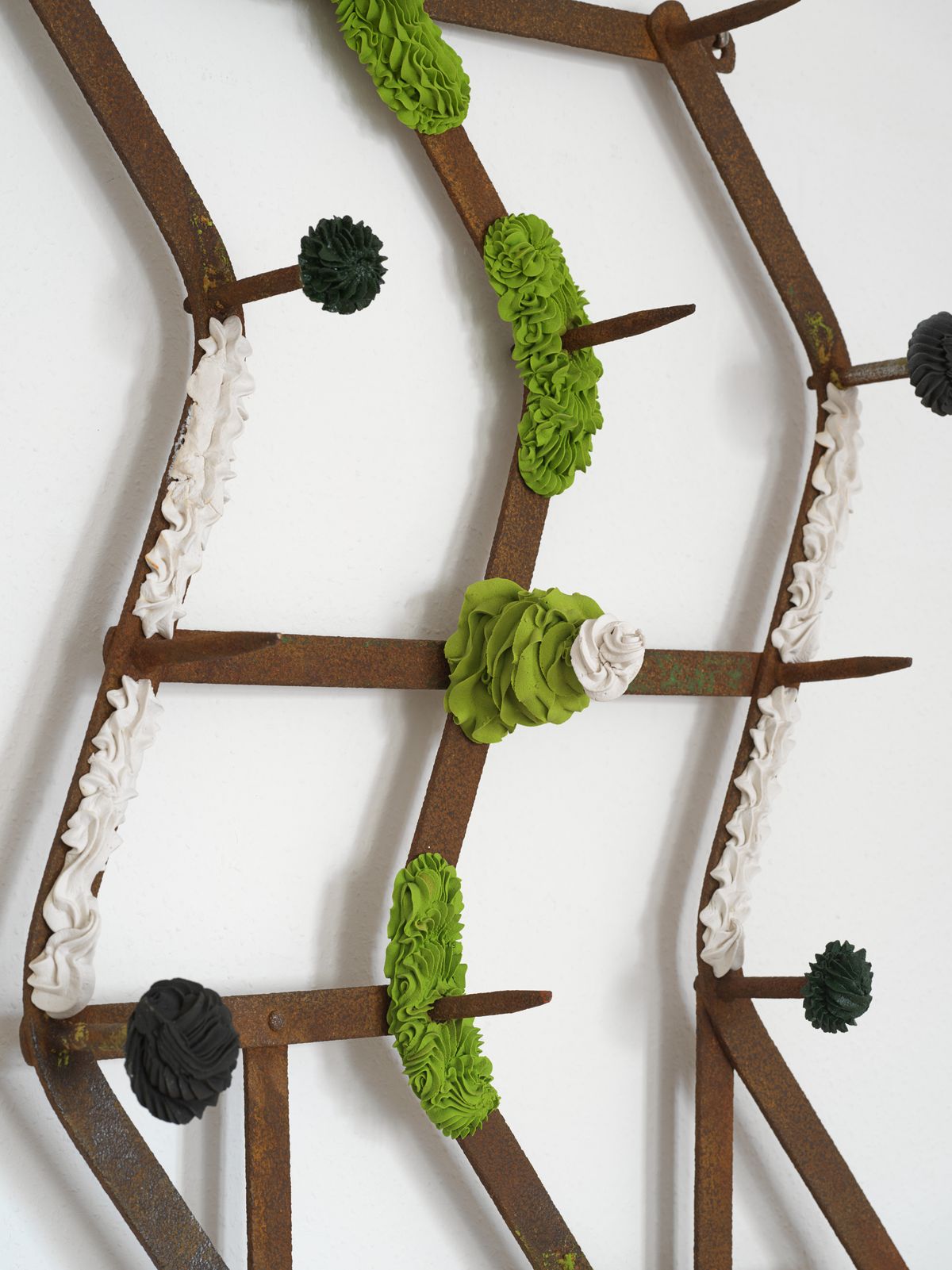 Totalherbizid II, 2019, harrow, piped glue and pigments, 82 x 67 x 18 cm (detail)
Totalherbizid II, 2019, harrow, piped glue and pigments, 82 x 67 x 18 cm (detail)
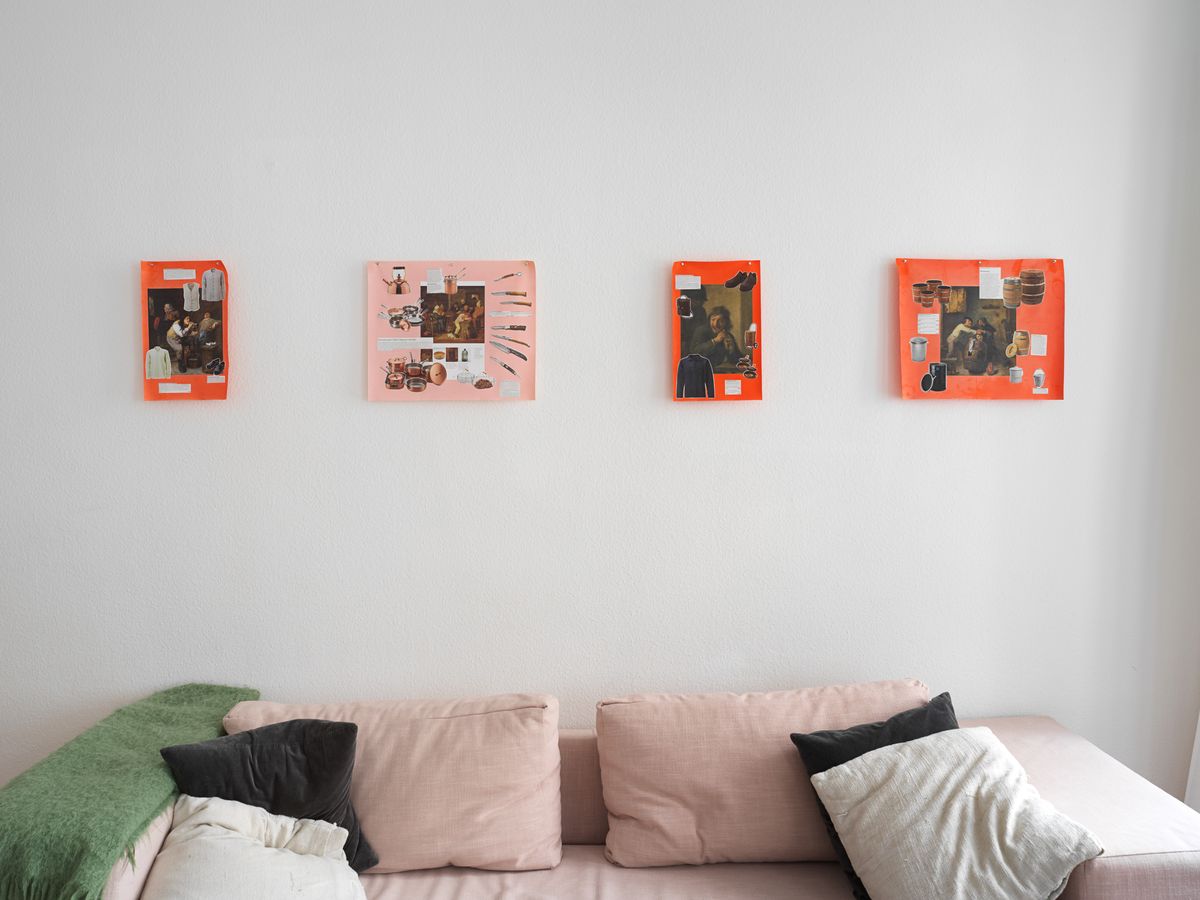 unkrautfrei installation view
unkrautfrei installation view
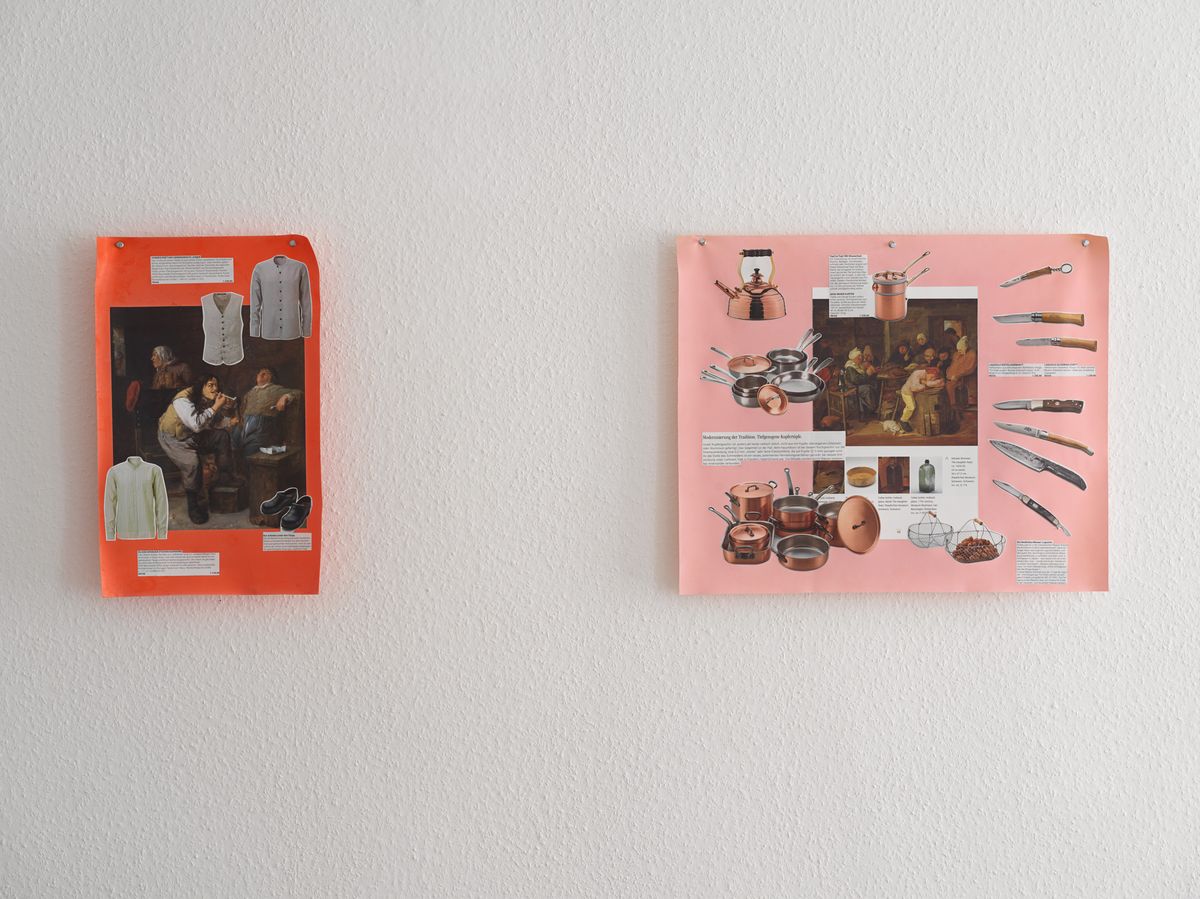 unkrautfrei installation view
unkrautfrei installation view
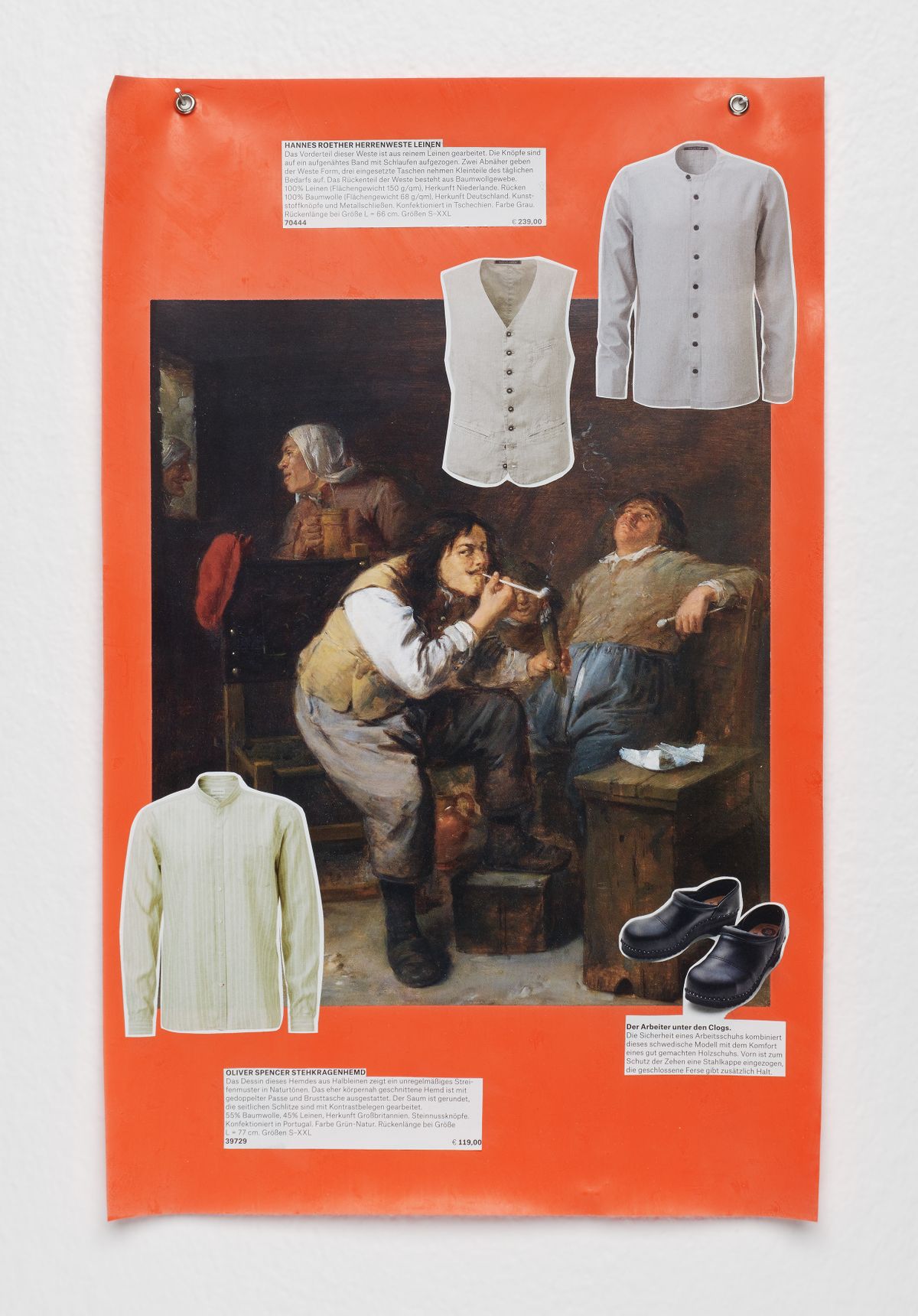 They still exist, the good things: The smoker, 2019, latex, Adriaen Brouwer catalogue images, Manufactum catalogue images, 39.5 x 25 cm
They still exist, the good things: The smoker, 2019, latex, Adriaen Brouwer catalogue images, Manufactum catalogue images, 39.5 x 25 cm
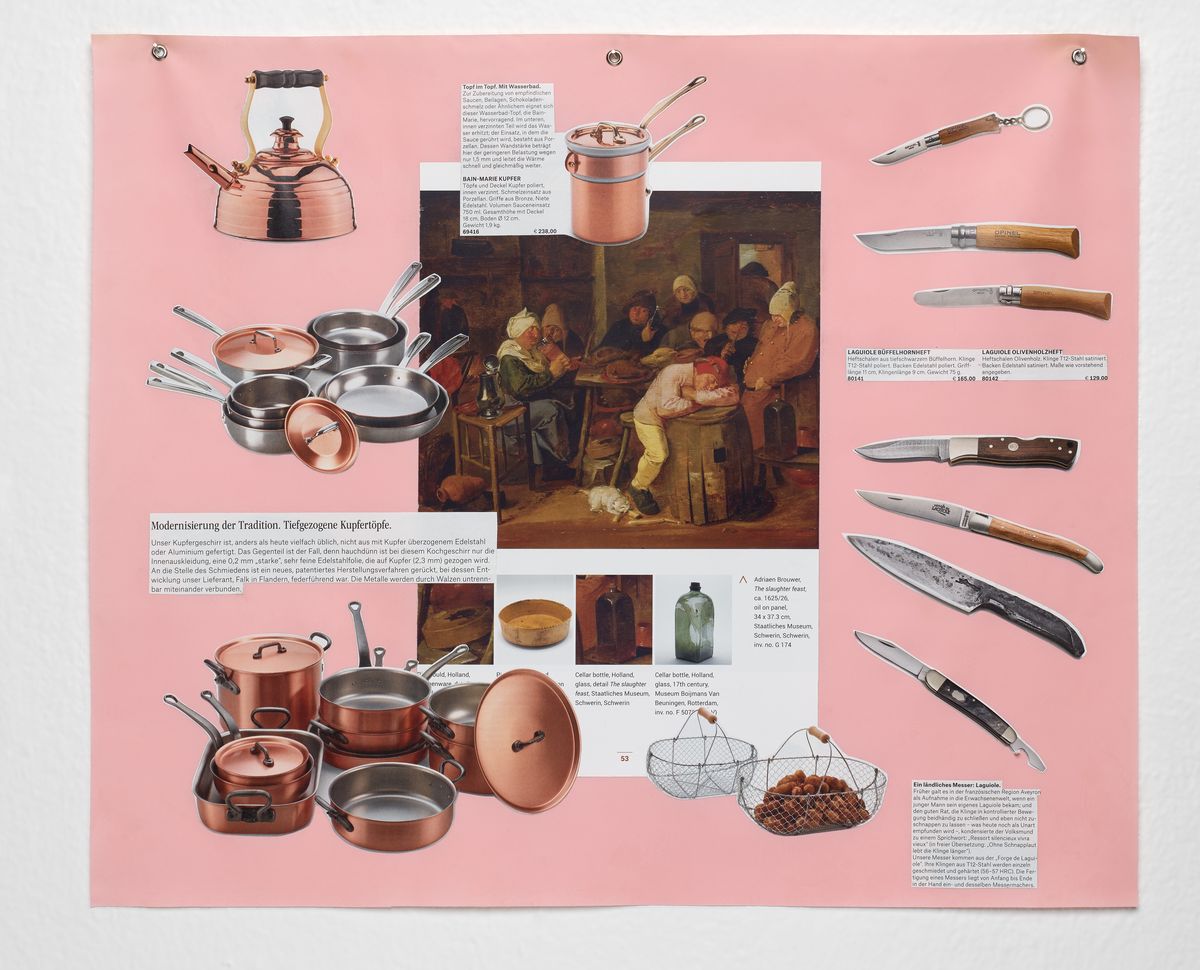 They still exist, the good things: The slaughter feast, 2019, latex, Adriaen Brouwer catalogue images, Manufactum catalogue images, 39.5 x 48 cm
They still exist, the good things: The slaughter feast, 2019, latex, Adriaen Brouwer catalogue images, Manufactum catalogue images, 39.5 x 48 cm
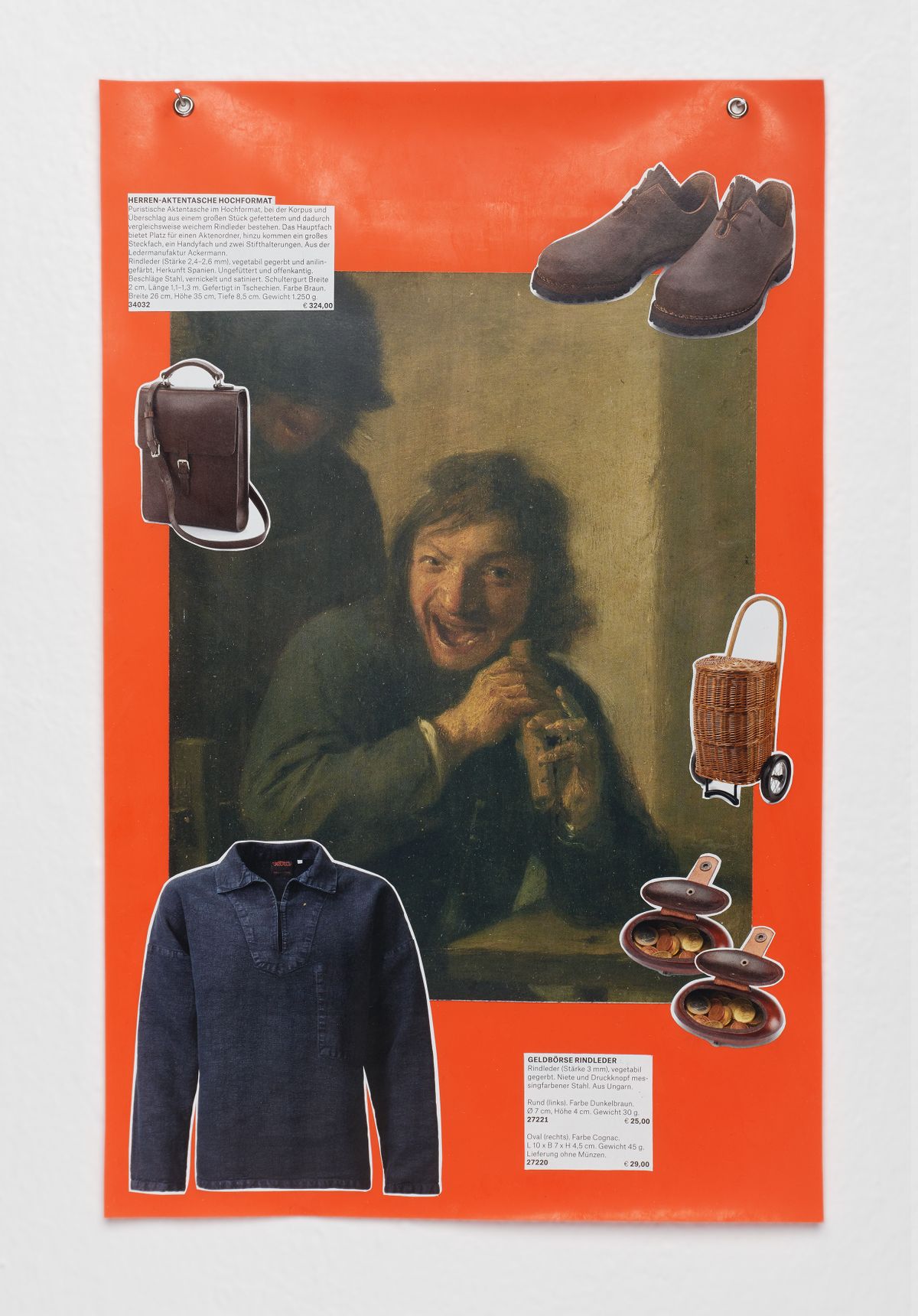 They still exist, the good things: The flautist, 2019, latex, Adriaen Brouwer catalogue images, Manufactum catalogue images, 39.5 x 25 cm
They still exist, the good things: The flautist, 2019, latex, Adriaen Brouwer catalogue images, Manufactum catalogue images, 39.5 x 25 cm
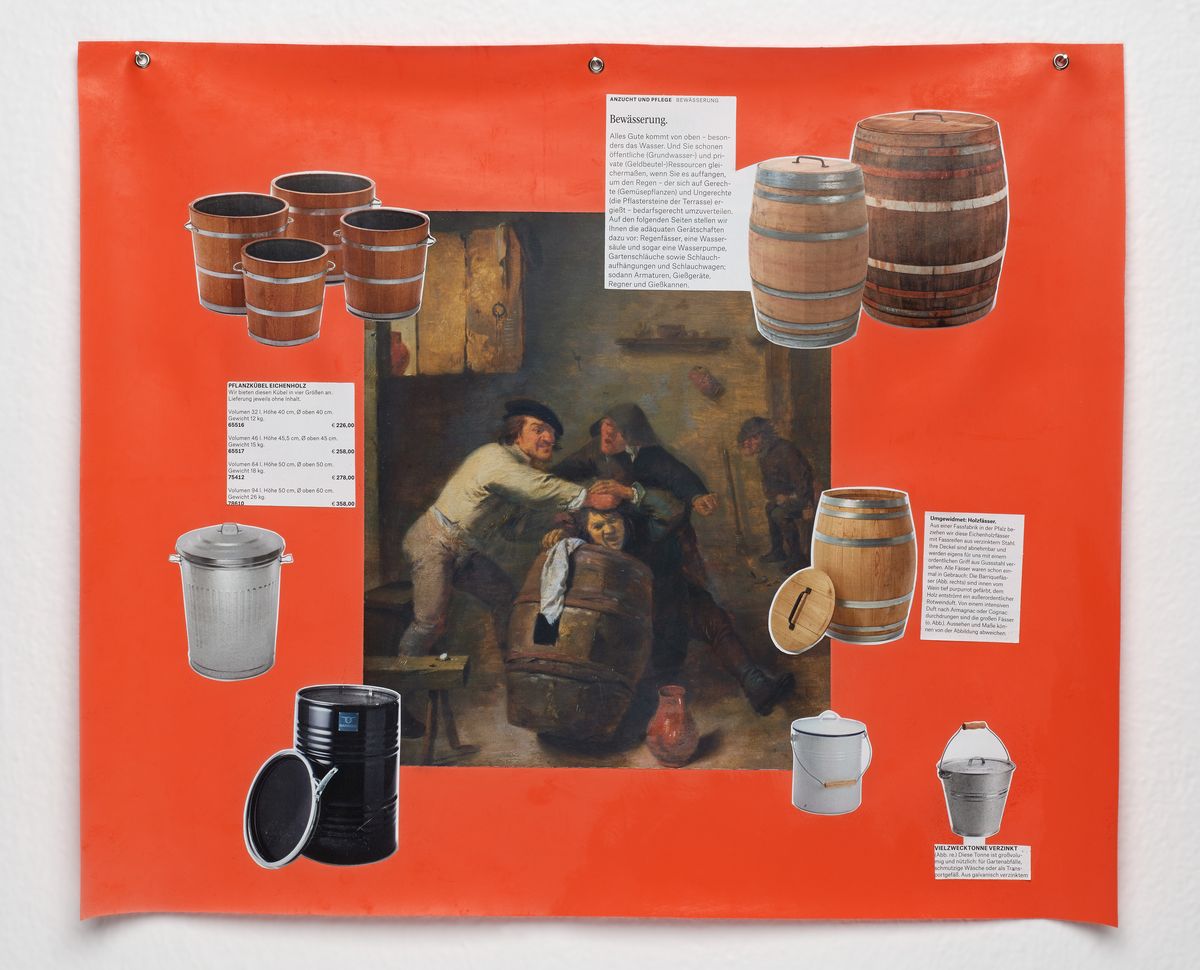 They still exist, the good things: Two peasants fighting, 2019, latex, Adriaen Brouwer catalogue images, Manufactum catalogue images, 40 x 47.5 cm
They still exist, the good things: Two peasants fighting, 2019, latex, Adriaen Brouwer catalogue images, Manufactum catalogue images, 40 x 47.5 cm
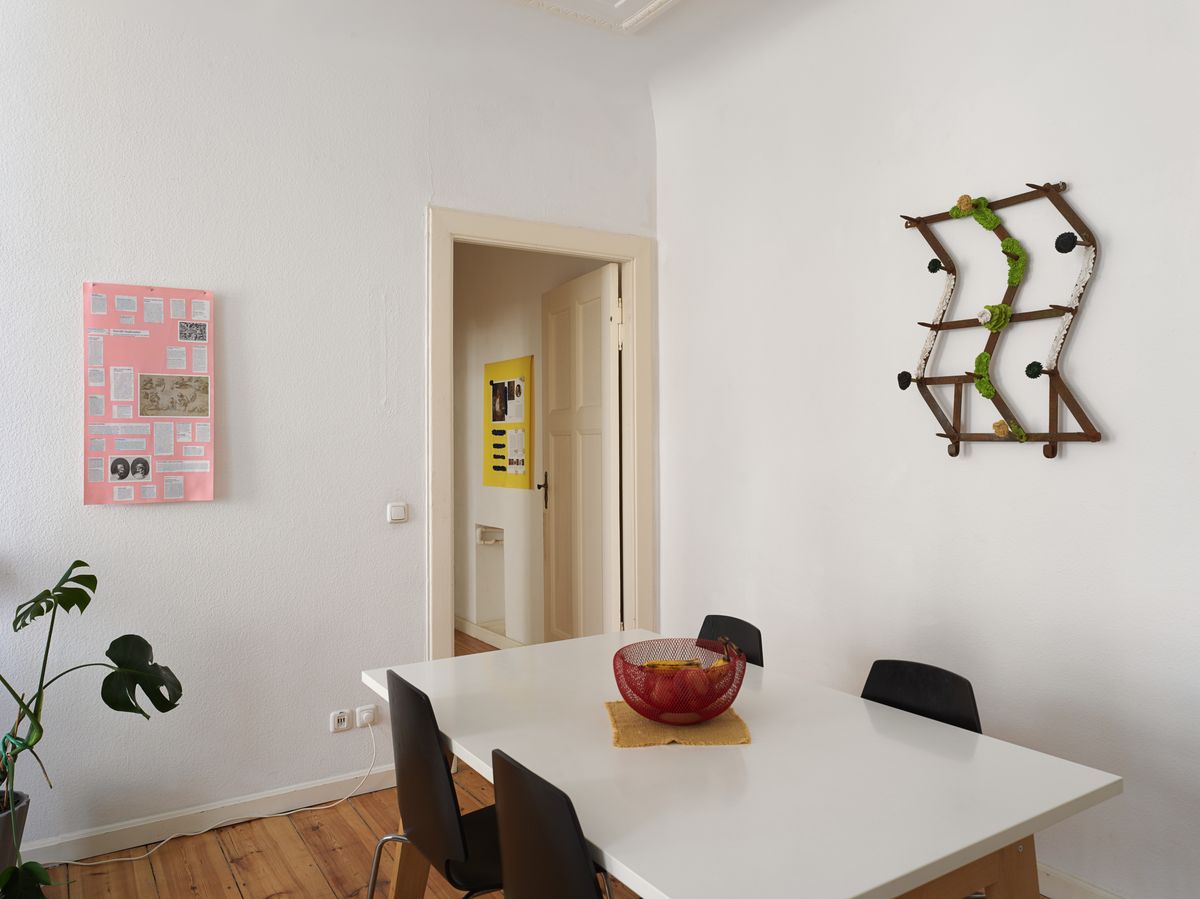 unkrautfrei installation view
unkrautfrei installation view
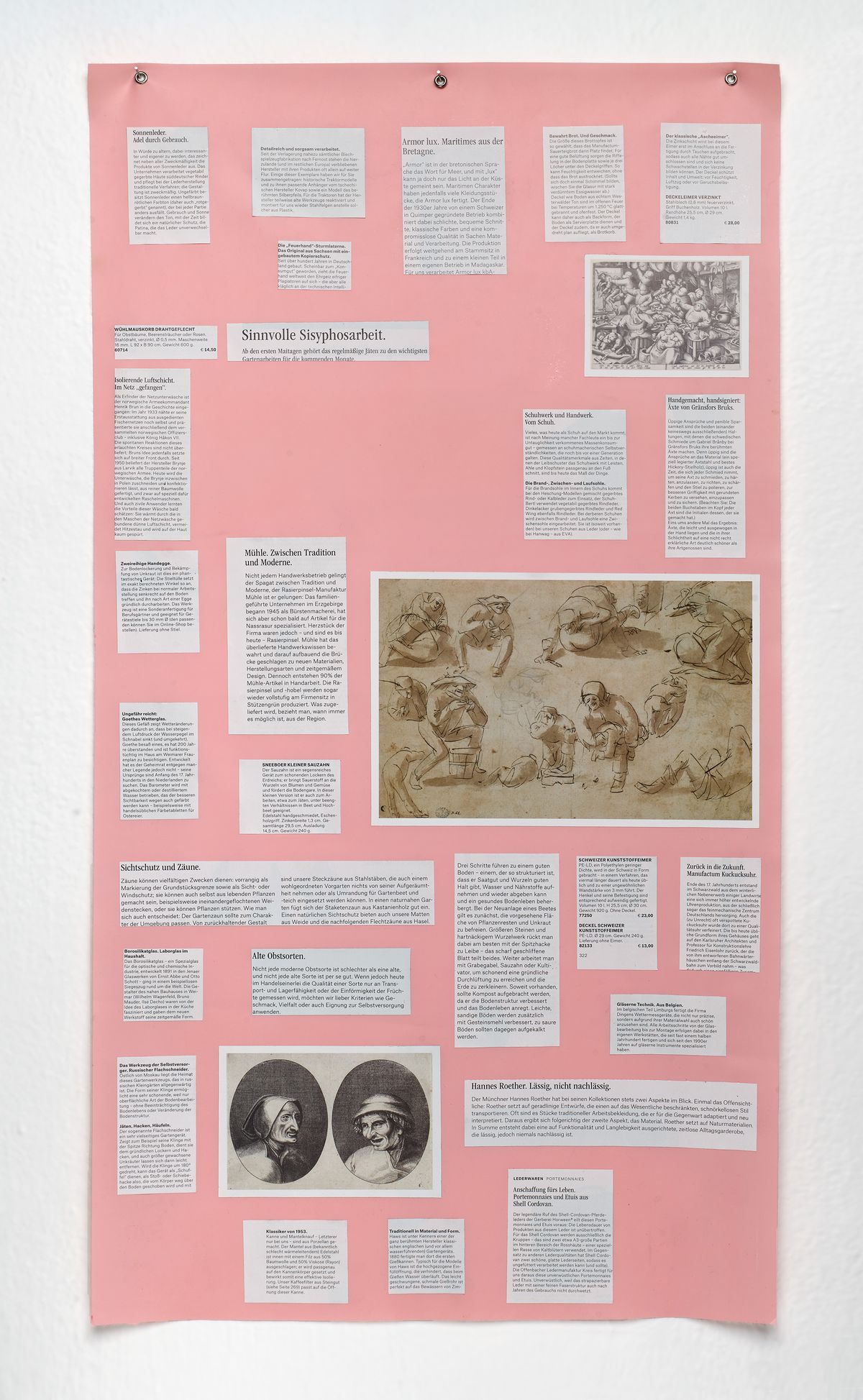 They still exist, the good things, 2019, latex, Adriaen Brouwer catalogue images, Manufactum catalogue images, 74.5 x 39 cm
They still exist, the good things, 2019, latex, Adriaen Brouwer catalogue images, Manufactum catalogue images, 74.5 x 39 cm
Jasmin Werner, unkrautfrei
14 September - 9 November, 2019
Salon Stuttgart is pleased to present unkratufrei by Jasmin Werner. Comprised of sculpture and collage works in a domestic environment, unkrautfrei ploughs a line through contemporary quests for status and self-realisation. The exhibition is anchored by two ploughing devices rusted with time and worn with use. The apartment setting of Salon Stuttgart renders these harrows decorative; a display strategy often seen with similar tools now devoid of their former use and relegated to the embellishment of sites, not of labour, but consumption: rustic eateries or eco-experiences. Each harrow has been adorned with an organic ooze of piped icing. Together, the rustic farm tools and domestic handicraft signal a different time: a place where men tilled the earth to grow their food and yearnings for expression - desires for something else - could easily be diverted and distilled into the domestic arts. But perhaps those times are not so far away. The elaborate equipment required to precisely pipe icing can easily be purchased today and even in the middle of the city, urban farmers and guerrilla gardeners exercise their green fingers. The call to live ‘auf dem Land’ resounds: a return to nature, the land, to ethical ways of living and being. Rosettes as sweet as icing, balanced on a metal spike.
Dispersed throughout Salon Stuttgart are collages juxtaposing product pictures and captions from Manufactum: an emporium of ‘skilfully crafted products made of premium materials’ with images of Adriaen Brouwer’s genre paintings, set in taverns and lowly hovels, where drunken peasants languish and brawl, their expressions of pleasure and pain executed in great detail. Morality plays or technical feats of realism, Browuer’s work approaches virtue ambivalently, unwilling to condemn particular preferences or activities. But the objects for sale at Manufactum (simple wares at exorbitant prices) seem to harvest moral outrage. The ownership of these heritage goods might be read as displays of piety: a stand against rampant consumerism and a lack of care for the environment. The founder of Manufactum, Thomas Hoof, believes there is something in the past that is still relevant today, that the objects of old daily life still have a complexity that is understandable, manageable to the individual. Hoof is also the owner of Manuscriptum, a publishing house that prints right wing populist material criticising the emancipation of women, political correctness, and European immigration policy. Among their titles are Akif Pirincci’s Die Grosse Verschwulung: Wenn aus Maenner Frauen werden und aus Frauen keine Maenner and Rolf Peter Sieferle’s Finis Germania.
The works in this exhibition draw attention to the desire to align oneself with nature and a pre-modern past, while occupying spaces of production and consumption that threaten to extinguish those very ideals. The pieces nod to the distinctions often drawn between nature and the man-made, the old and the new, the country and the city, and the ways in which these boundaries are patrolled yet blurred in an attempt to encourage a dis-identification that leaves one wanting but unable. Jasmin Werner’s work often explores architectures of power and objects of status. unkratufrei posits that these signifiers are idealised models - abstractions - about possible futures. Werner’s objets present the allure of nostalgia and drive to display piety in the face of uncertainty. If our imaginings of the future are idealised then they also produce a counterpart that is deplorable, immoral and ignorant like the peasants Brouwer painted. In the imagined future we must sieve the wicked from the good, in the imagined future we can taste only emancipation or dread.
Photos by Nick Ash and Alwin Lay. Courtesy the artist and Salon Stuttgart.